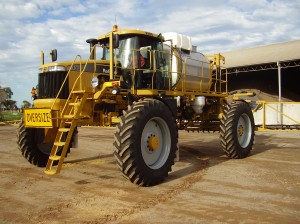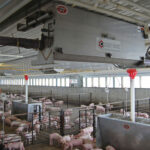RoGator Purchase Translates to Paddock Efficiencies
In such an extreme season, one that has seen north west Victoria, Australia receive its annual rainfall in the space of a month, the Walters family says the operating efficiencies of its new 1386 RoGator from Croplands Equipment has proved...
RoGator Purchase Translates to Paddock Efficiencies
In such an extreme season, one that has seen north west Victoria, Australia receive its annual rainfall in the space of a month, the Walters family says the operating efficiencies of its new 1386 RoGator from Croplands Equipment has proved...In such an extreme season, one that has seen north west Victoria, Australia receive its annual rainfall in the space of a month, the Walters family says the operating efficiencies of its new 1386 RoGator from Croplands Equipment has proved its worth. “With a bit of share farming we put in about 12,500 acres of cereal and canola,” Trevor Walters said. Despite the tough start to a year with already more than 12 inches of rain falling on the district’s Mallee-type country, crop yields described as “quite good,” were offset by their winter crop harvest being downgraded to feed status. Interestingly, both Trevor and son Haydn have racked up plenty of experience using RoGator technology having previously purchased a 1274C unit.

“We just knew the way to go (forward) was with specialist spraying machines – a decision we made some three years ago,” he added.
Today, the property operates with a 120ft boom, plus enjoys a tank capacity that has been lifted from about 5000L to a fraction over 6000L, giving the Walters a further lift in operational capacity.
Trevor draws attention to the 1386 being very “health and safety compliant,” offering a chemical and dust-free cab environment through proven filtration systems, also drawing attention to its efficient water and chemical transfer. “Safety and overall handling of chemicals is so important when we are handling such large amounts,” he said. The family expects RoGators like its new 1386 model to cover between 500 to 600 hours a year, thereby quickly earning its keep.
The family says the 2011 season has been “a dream for spraying” because all the rain has translated into much higher humidity levels, resulting in a lot more work being carried out in day light hours. The Walters say it is difficult to pinpoint hourly outputs turned in by their 1386 newcomer. However, they can cover 1500-plus acres in daylight hours by which time the 1386’s tank usually has been re-filled six times.
“It all adds up to getting more done with less fills,” Trevor said. “Our spraying window is reasonably small and we like to keep the Delta-T levels right for ideal spraying,” he added. “You need to either spray at night – and we have found the machine very good from the perspective of its lights – or start very early in the morning and try and get two or three tanks out before it warms up,” Trevor Walters said.
Do you have examples of how your farm equipment has improved your efficiencies?



